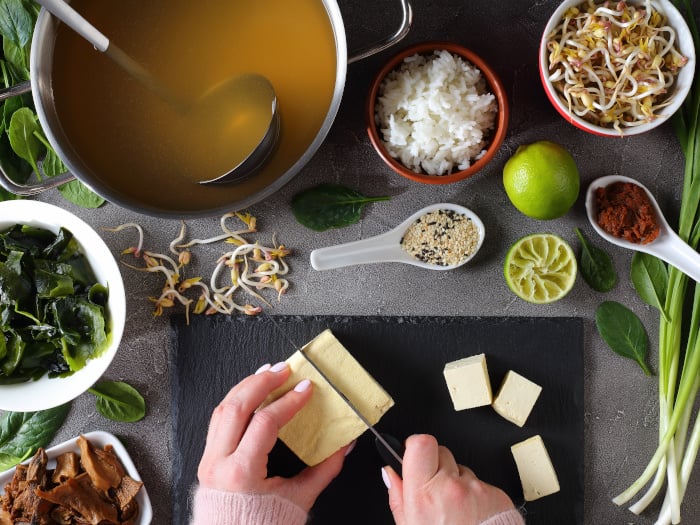Sake is a traditional Japanese rice wine made by fermenting polished rice bran. It is typically around 15% ABV and is a popular drink to pair with meals. Sake is also a famous ingredient in many recipes, as it both tenderizes the meat and adds a subtle depth of flavor. However, if you can’t find sake in your area, there are many ingredients that can make up for amazing sake substitutes. [1]
Sake Substitutes
Let us look at the most popular substitutes for sake in cooking recipes.
Mirin, Sweet Sherry, or Chinese Shaoxing Wine
They are all good substitutes if the recipe calls for only a small amount of sake, such as 1-2 tbsp. However, adding more than that may change the flavor of the recipe entirely.

Dashi stock can be used as an alternative to sake. Credit: Shutterstock
Rice Wine Vinegar
For larger amounts, many people prefer to use rice wine vinegar, although much of the sweetness of the sake will be lost.
White Grape Juice
To keep the tenderizing quality of sake, a combination of white grape juice and lemon zest can be used. This mixture can maintain the acidity levels while mimicking many of sake’s original flavors. [2]
Dashi Stock or Soy Sauce
Mixing a pinch of either Dashi stock or soy sauce with white grape juice will give a bit of umami to a recipe, and not take over the sweetness of the juice. This is a good non-alcoholic substitute for sake. Dashi stock and soy sauce are not recommended as substitutes by themselves, as their bold earthiness may overwhelm a recipe. [3]
Word of Caution: Cooking with alcoholic beverages results in only some loss of alcohol content. Foods baked or simmered in alcohol can retain anywhere from 4 percent to 85 percent of the alcohol, according to a study by the U.S. Department of Agriculture’s Nutrient Data lab. Also, if you are following a total avoidance of alcohol, you may want to skip using different kinds of wine vinegar as they do still contain some level of alcohol. [4]
If you have more questions on Japan’s traditional beverage, please visit Everything You Need To Know About Sake.
